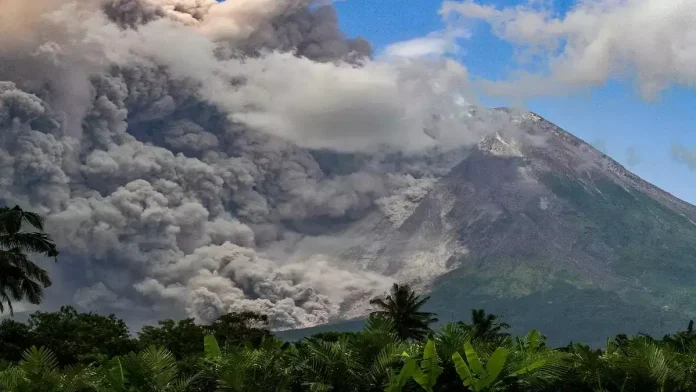In a recurring display of nature’s might, Mount Merapi, the formidable volcano situated on the border between Central Java and Yogyakarta provinces in Indonesia, has erupted once again. This event follows closely on the heels of another volcanic eruption in West Sumatra just a month and a half ago. While the eruption in West Sumatra resulted in no casualties, the same cannot be said for Mount Merapi’s eruption in early December, where 11 hikers lost their lives and 12 others remain missing.
The recent eruption has, thankfully, spared lives this time, with no reported fatalities, but two individuals have sustained injuries. Reports indicate that the wind around the peak of Mount Merapi is currently blowing eastward, affecting the eastern slope area with volcanic ash rain.
Situated in the Pacific Ring of Fire, the Indonesian archipelago is no stranger to heightened volcanic and seismic activities due to the convergence of continental plates. Mount Merapi, standing at 2,891 meters and often referred to as the “Fire Mountain” in Indonesia and Java, holds the notorious distinction of being the most active volcano in the country, erupting regularly since 1548.
Authorities have swiftly responded to the eruption, issuing instructions for locals to wear masks and glasses, and advising against outdoor activities until the ash rain subsides. Additionally, cautionary measures are in place for drivers navigating potentially slippery roads due to the volcanic ash.
The latest eruption serves as a stark reminder of the unpredictable nature of volcanic activity in the region, urging communities and authorities to remain vigilant and proactive in the face of such natural phenomena. As Indonesia grapples with the aftermath of Mount Merapi’s recent eruption, the resilience of its people and the ongoing efforts to manage these crises highlight the challenges posed by living in the shadow of active volcanoes.



